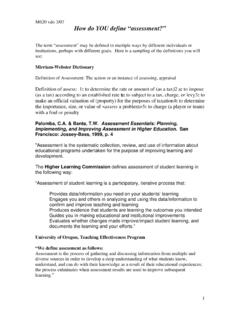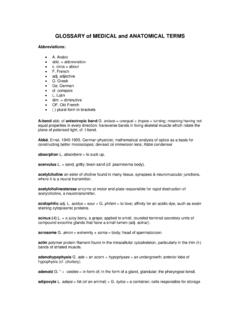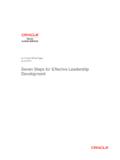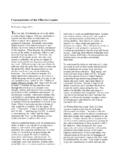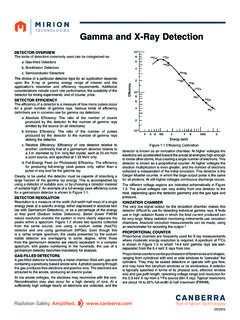Transcription of The essential elements of team-based learning
1 1 TBL is a collection of practices that support one another for powerful instructional effect. This chapter describes the building blocks of team - based learning and the steps necessary to put them into place. The essential elements of team - based learning Larry K. Michaelsen, Michael Sweet team - based learning (TBL) possibly relies on small group interaction more heavily than any other commonly used instructional strategy in postsecondary education (for comparative discussion of different approaches, see Fink, 2004;. Johnson, Johnson, and Smith, 2007; Millis and Cottell, 1998). This conclu- sion is based on three facts.
2 First, with TBL, group work is central to expos- ing students to and improving their ability to apply course content. Second, with TBL, the vast majority of class time is used for group work. Third, courses taught with TBL typically involve multiple group assignments that are designed to improve learning and promote the development of self- managed learning teams. This chapter begins with a brief overview of TBL. Next, we discuss the four essential elements of TBL and then walk through the steps required to implement them. Finally, we examine some of the benefits that students, administrators, and faculty can expect from a successful implementation of TBL.
3 A Broad Overview of TBL. The primary learning objective in TBL is to go beyond simply covering con- tent and focus on ensuring that students have the opportunity to practice using course concepts to solve problems. Thus, TBL is designed to provide students with both conceptual and procedural knowledge. Although some time in the TBL classroom is spent ensuring that students master the course NEW DIRECTIONS FOR TEACHING AND learning , no. 116, Winter 2008 Wiley Periodicals, Inc. 7. Published online in Wiley InterScience ( ) DOI: 8 team - based learning : SMALL-GROUP learning 'S NEXT BIG STEP. content, the vast majority of class time is used for team assignments that focus on using course content to solve the kinds of problems that students are likely to face in the future.
4 Figure outlines generally how time in one unit of a TBL course is organized. In a TBL course, students are strategically organized into permanent groups for the term, and the course content is organized into major units . typically five to seven. Before any in-class content work, students must study assigned materials because each unit begins with the readiness assur- ance process (RAP). The RAP consists of a short test on the key ideas from the readings that students complete as individuals; then they take the same test again as a team , coming to consensus on team answers. Students receive immediate feedback on the team test and then have the opportunity to write evidence- based appeals if they feel they can make valid arguments for their answer to questions that they got wrong.
5 The final step in the RAP is a lec- ture (usually very short and always very specific) to enable the instructor to clarify any misperceptions that become apparent during the team test and the appeals. Once the RAP is completed, the remainder (and the majority) of the learning unit is spent on in-class activities and assignments that require stu- dents to practice using the course content. The Four essential elements of team - based learning Shifting from simply familiarizing students with course concepts to requir- ing that students use those concepts to solve problems is no small task. Making this shift requires changes in the roles of both instructor and stu- dents.
6 The instructor's primary role shifts from dispensing information to designing and managing the overall instructional process, and the students'. role shifts from being passive recipients of information to one of accepting responsibility for the initial exposure to the course content so that they will be prepared for the in-class teamwork. Changes of this magnitude do not happen automatically and may even seem to be a dream rather than an achievable reality. They are, however, achiev- able when the four essential elements of TBL are successfully implemented: Groups. Groups must be properly formed and managed.
7 Accountability. Students must be accountable for the quality of their indi- vidual and group work. Feedback. Students must receive frequent and timely feedback. Assignment design. Group assignments must promote both learning and team development. When these four elements are implemented in a course, the stage is set for student groups to evolve into cohesive learning teams. NEW DIRECTIONS FOR TEACHING AND learning DOI: Figure team - based Instructional Activity Sequence Note: This sequence is repeated for each major instructional unit typically five to seven per course. NEW DIRECTIONS FOR TEACHING AND learning DOI: 10 team - based learning : SMALL-GROUP learning 'S NEXT BIG STEP.
8 Element 1: Properly Formed and Managed Groups. TBL requires that the instructor oversee the formation of the groups so that he or she can manage three important variables: ensuring that the groups have adequate resources to draw from in completing their assignments and approximately the same level of those resources across groups, avoiding membership coali- tions that are likely to interfere with the development of group cohesiveness, and ensuring that groups have the opportunity to develop into learning teams. Distributing Member Resources. In order for groups to function as effec- tively as possible, they should be as diverse as possible.
9 Each group should contain a mix of student characteristics that might make the course easier or more difficult for a student to do well in the course (for example, previ- ous course work or course-related practical experience) as well as demo- graphic characteristics like gender and ethnicity. The goal here is to equip groups to succeed by populating them with members who will bring differ- ent perspectives to the task. Findings in both group dynamics research (Brobeck and others, 2002). and educational research (Chan, Burtis, and Bereiter, 1997) illuminate the positive impact of diverse input in problem-solving discussions on both learn- ing and performance.
10 When group members bring many different perspec- tives to a task, their process of collaborative knowledge building in pursuit of consensus is powerful to watch. In addition, although member diversity ini- tially inhibits both group processes and performance, it is likely to become an asset when members have worked together over time and under conditions that promote group cohesiveness (Watson, Kumar, and Michaelsen, 1993). Minimizing Barriers to Group Cohesiveness: Avoiding Coalitions. Coalitions within a group are likely to threaten its overall development. In newly formed groups, either a previously established relationship between a subset of mem- bers in the group (such as a boyfriend and girlfriend or fraternity brothers) or the potential for a cohesive subgroup based on background factors such as nationality, culture, or native language is likely to burden a group with insider- outsider tension that can plague the group throughout the term.
